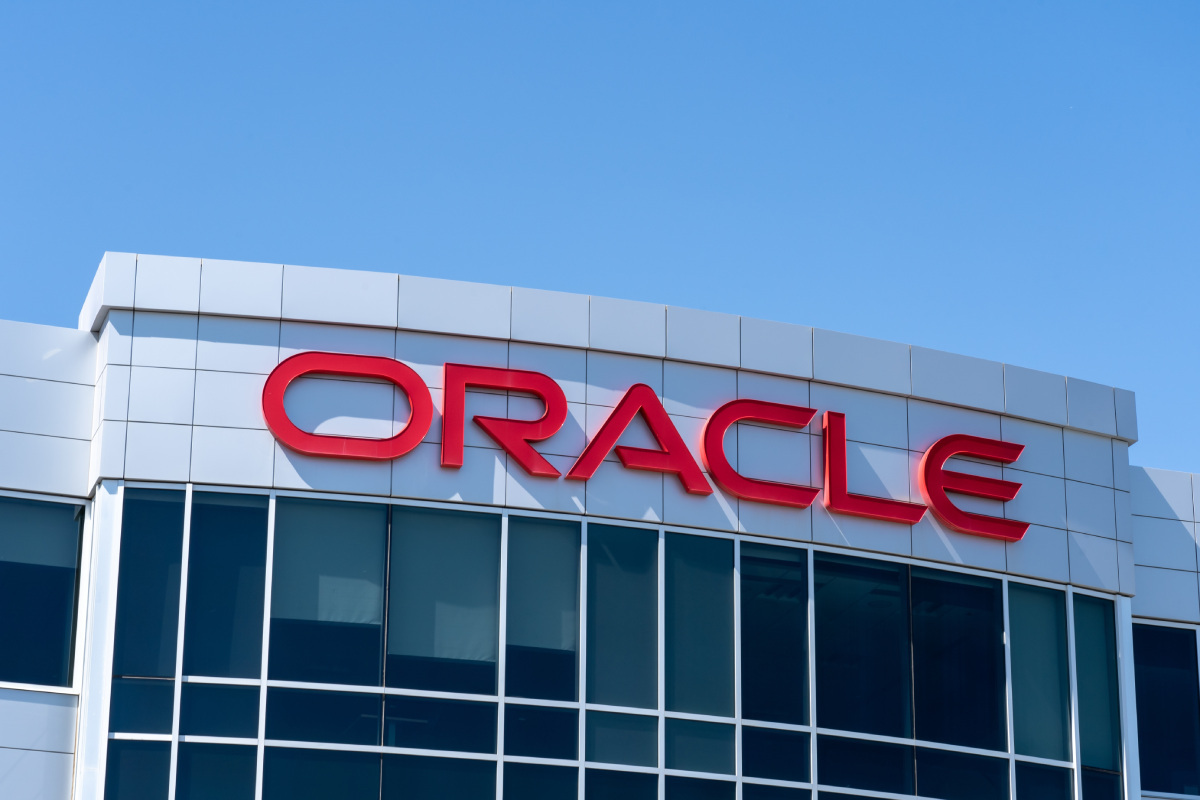
Shares of Oracle Corporation (ORCL) surged last month after the enterprise software giant reported a stunning 359% jump in its AI-related backlog, pushing total outstanding orders to $455 billion. However, beneath the headline growth, Oracle’s balance sheet tells a far riskier story.
The company’s debt-to-equity ratio — a key measure of how much debt it uses relative to shareholder equity — has ballooned to a staggering 520%, according to data from Bloomberg and JPMorgan Asset Management.
That’s more than double the leverage carried by Apple (AAPL) and IBM (IBM), which stand at roughly 200% and 230%, respectively, and far higher than the rest of the “Magnificent Seven” tech leaders.
Companies like Nvidia (NVDA), Amazon (AMZN), Microsoft (MSFT), Meta Platforms (META), Alphabet (GOOGL), and Tesla (TSLA) all maintain much leaner balance sheets, with debt-to-equity ratios below 50%.
According to JPMorgan, Oracle’s much-celebrated $300 billion cloud infrastructure deal with OpenAI could require the company to borrow even more to fulfill its commitments.
“Oracle may need to raise up to $100 billion in debt over the next 4 years to fund the contract,” wrote The Kobeissi Letter, a market commentator.
Shocking stat of the day:
undefined The Kobeissi Letter (@KobeissiLetter) September 30, 2025
Oracle, $ORCL, has a debt-to-equity ratio of a whopping 520%.
This is more than double the ratios of Apple, $AAPL, and IBM, $IBM.
By comparison, Amazon, $AMZN, and Microsoft, $MSFT, have debt-to-equity ratios of 50% and 30%, respectively.
According… pic.twitter.com/ZTtC9ENxci
The numbers raise an uncomfortable question for investors: Is Oracle’s AI-fueled rally built on genuine growth or a mountain of debt?
A record rally built on unearned revenue and unbuilt infrastructure
Oracle’s meteoric rally last month stunned Wall Street. As InvestorsObserver reported, Oracle shares soared 36% in a single trading session after the company announced a massive jump in its AI-related backlog, adding an eye-popping $244 billion in market capitalization in just one day.
The stock touched a closing high near $330 a share before retreating below $290, still boasting a 73% year-to-date gain and valuing the company at roughly $822 billion.
However, some analysts are calling the surge too good to be true.
JPMorgan’s Michael Cembalest questioned the sustainability of the rally, noting that it’s built on Oracle’s $60 billion-a-year deal with OpenAI - a commitment, he wrote, “based on an amount of money OpenAI doesn’t earn yet, to provide cloud computing facilities that Oracle hasn’t built yet.”
Beyond the financing challenge, the scale of the infrastructure needed to deliver on that promise is staggering. Cembalest estimates the project would require 4.5 gigawatts of power, roughly equivalent to 2.25 Hoover Dams or four nuclear power plants, underscoring the immense logistical and capital demands ahead.
As InvestorsObserver reported, America’s power grid is already under strain, with rising electricity costs and massive Big Tech infrastructure buildouts making it increasingly difficult for energy suppliers to keep pace with surging demand.
“Public concern over electricity bills is growing,” wrote Ed Crooks of Wood Mackenzie, noting that with the AI boom driving up demand, there’s little to prevent prices from climbing even higher.
Your email address will not be published. Required fields are markedmarked